Sweet Chariot might sound like something out of a legend, but it’s actually one of the simplest and most reliable trading strategies out there. Both beginners and experienced traders like it because it works well in markets where prices move steadily up or down. At its core, Sweet Chariot follows trends using a moving average indicator—most often a simple moving average (SMA). This indicator calculates the average price over the last 40 periods, which are typically set to either one day or one week.
With these basics in mind, let’s explore how the Sweet Chariot strategy actually works and how you can put it into action.
How The Strategy Works
The Sweet Chariot strategy works especially well for traders who focus on the medium or short term. While you can use it on charts with shorter periods like 1-hour or 4-hour, it tends to deliver more consistent results on daily or weekly charts.
The approach is easy to follow:
- You buy when the current price climbs above the 40-period SMA.
- You sell when the current price falls below that same 40-period SMA.
The example below shows a BTC/USDT chart with a 40-day SMA applied. The green marker highlights a buy signal, indicating that the price has risen above the average, while the red marker indicates a sell signal, showing that the price has dropped below the average.
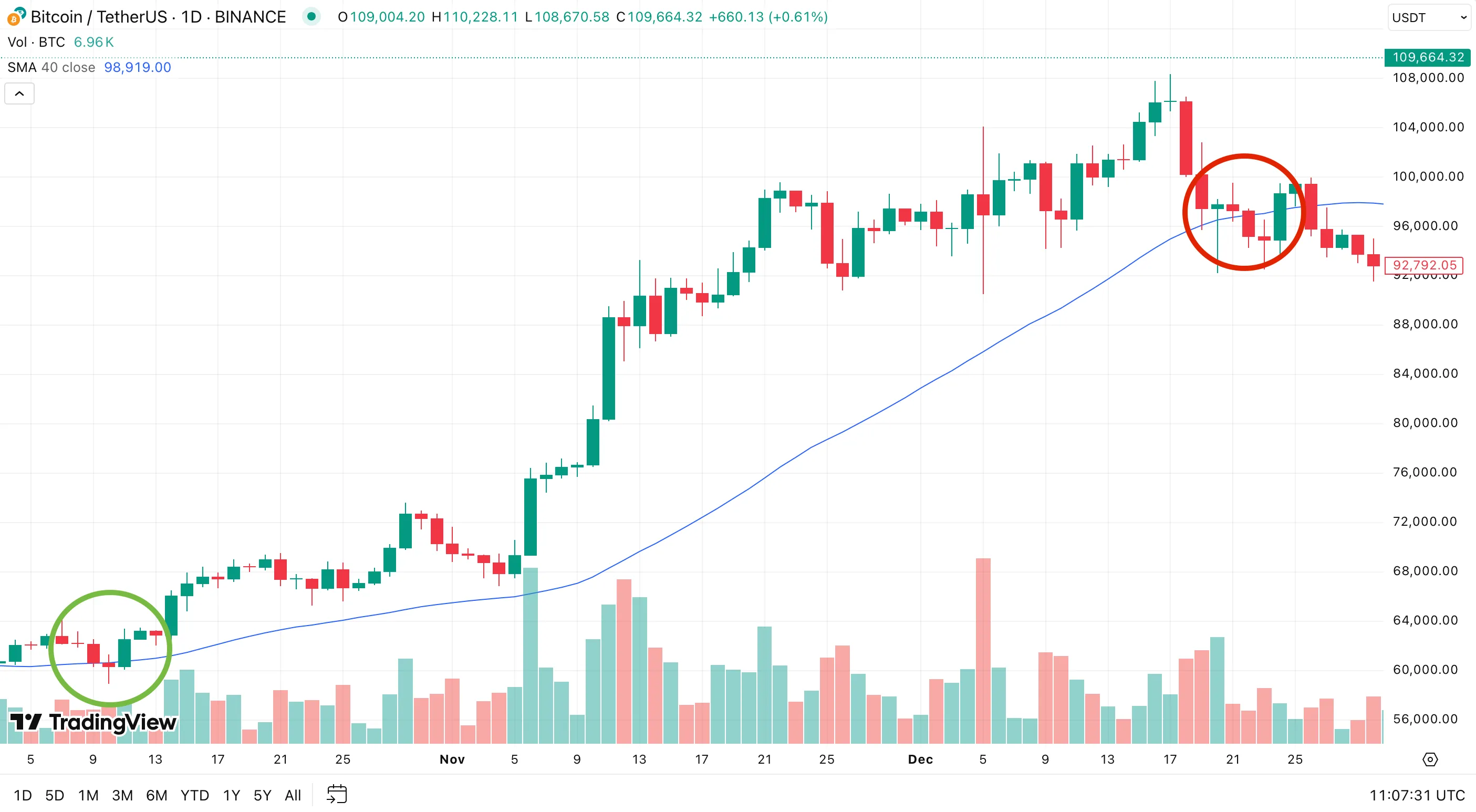
How to Build It on Jellydator
Start by adding a Paths step to your Jellydator editor. This creates two parallel decision paths for your strategy.
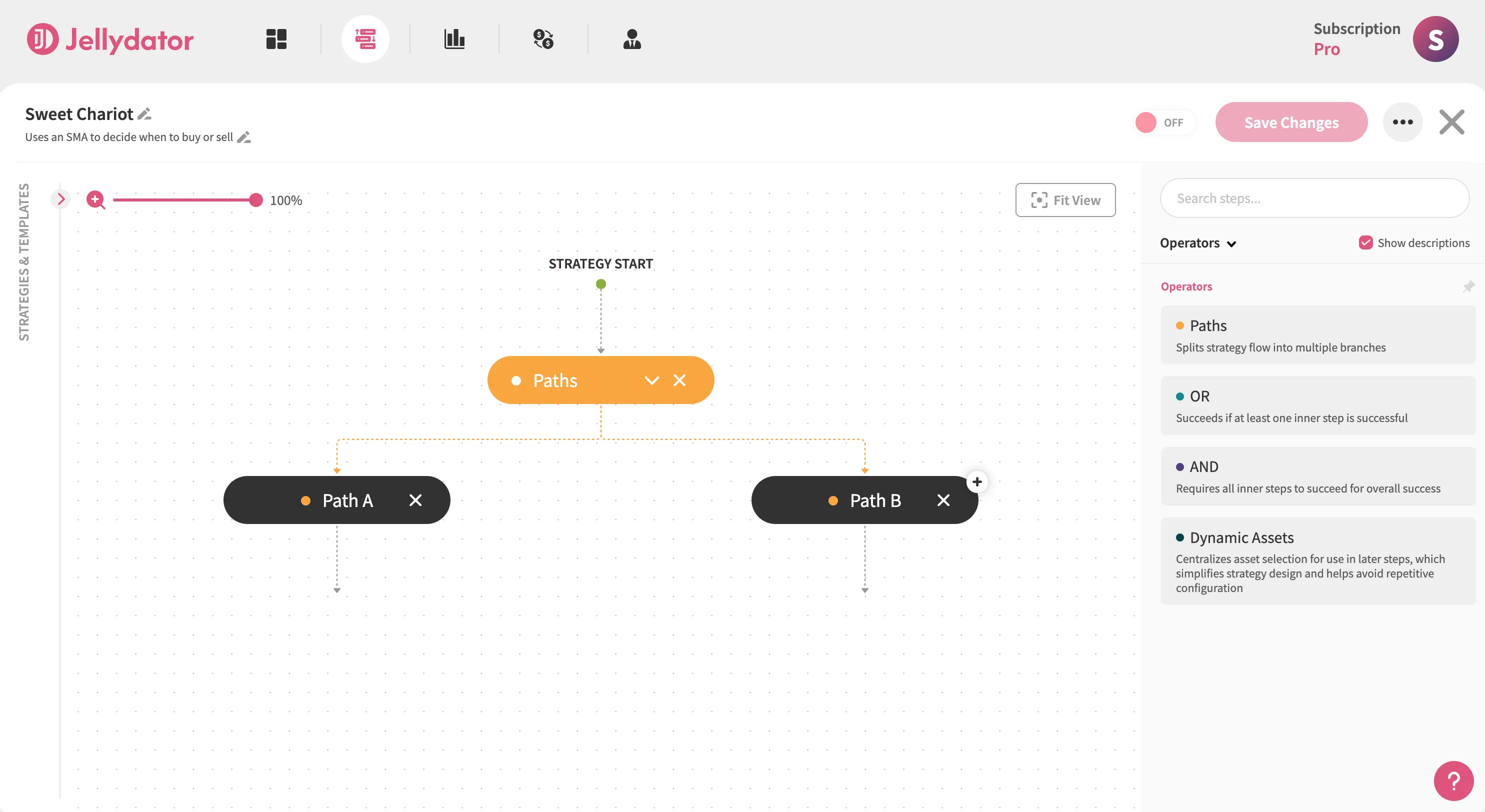
Path A Configuration
In Path A, add a Moving Average step and select it to open the configuration panel. Ensure the indicator calculates and uses the Simple Moving Average (SMA) for your target asset (we’ll use BTC/USDT in this guide). Then, select the 1-day candle interval.
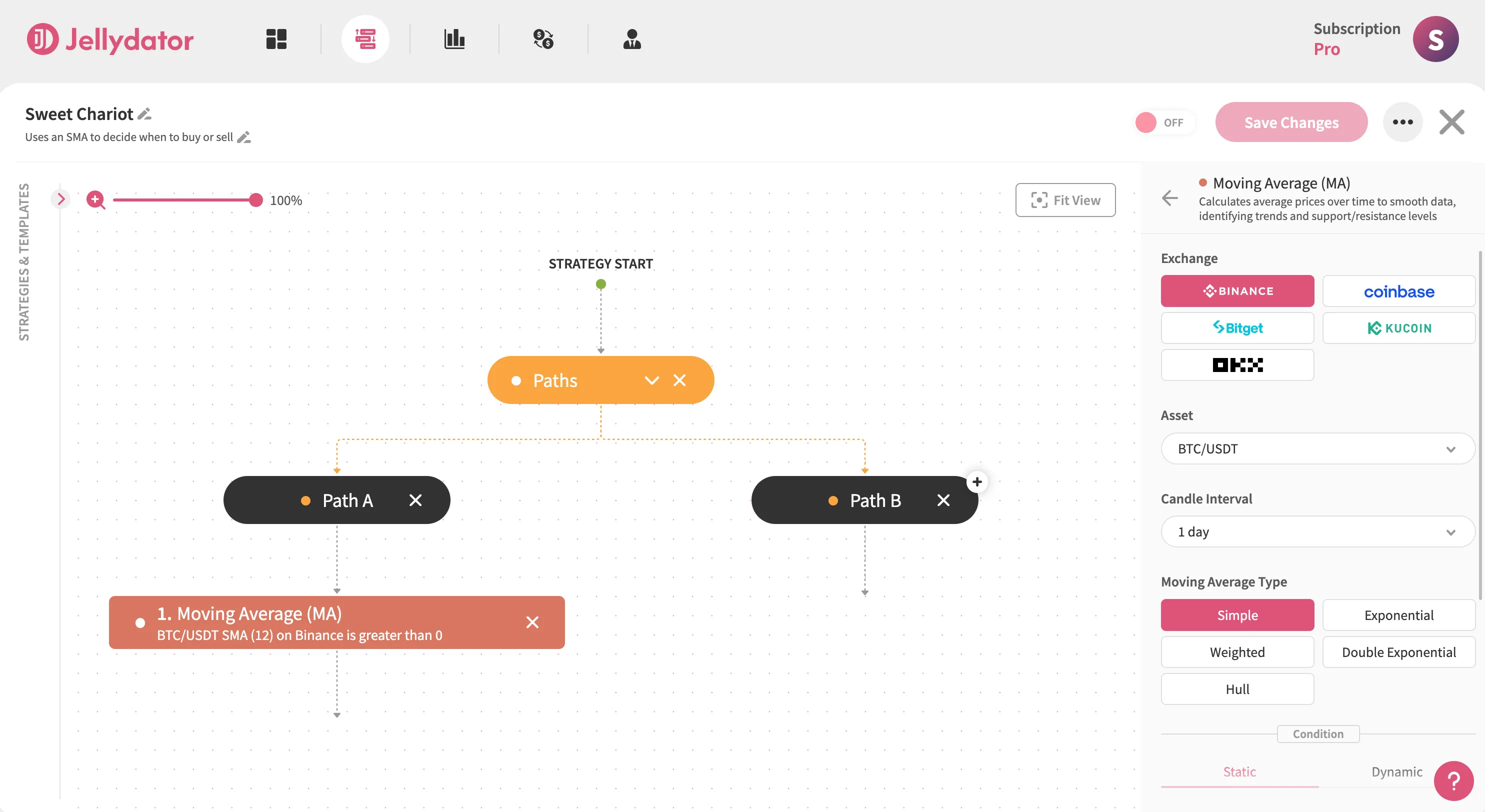
Scroll to the “Condition” section, choose the “Dynamic” option, then set “Latest Price” as the condition target. Select Less as the operator to establish the “SMA < Latest Price” condition.
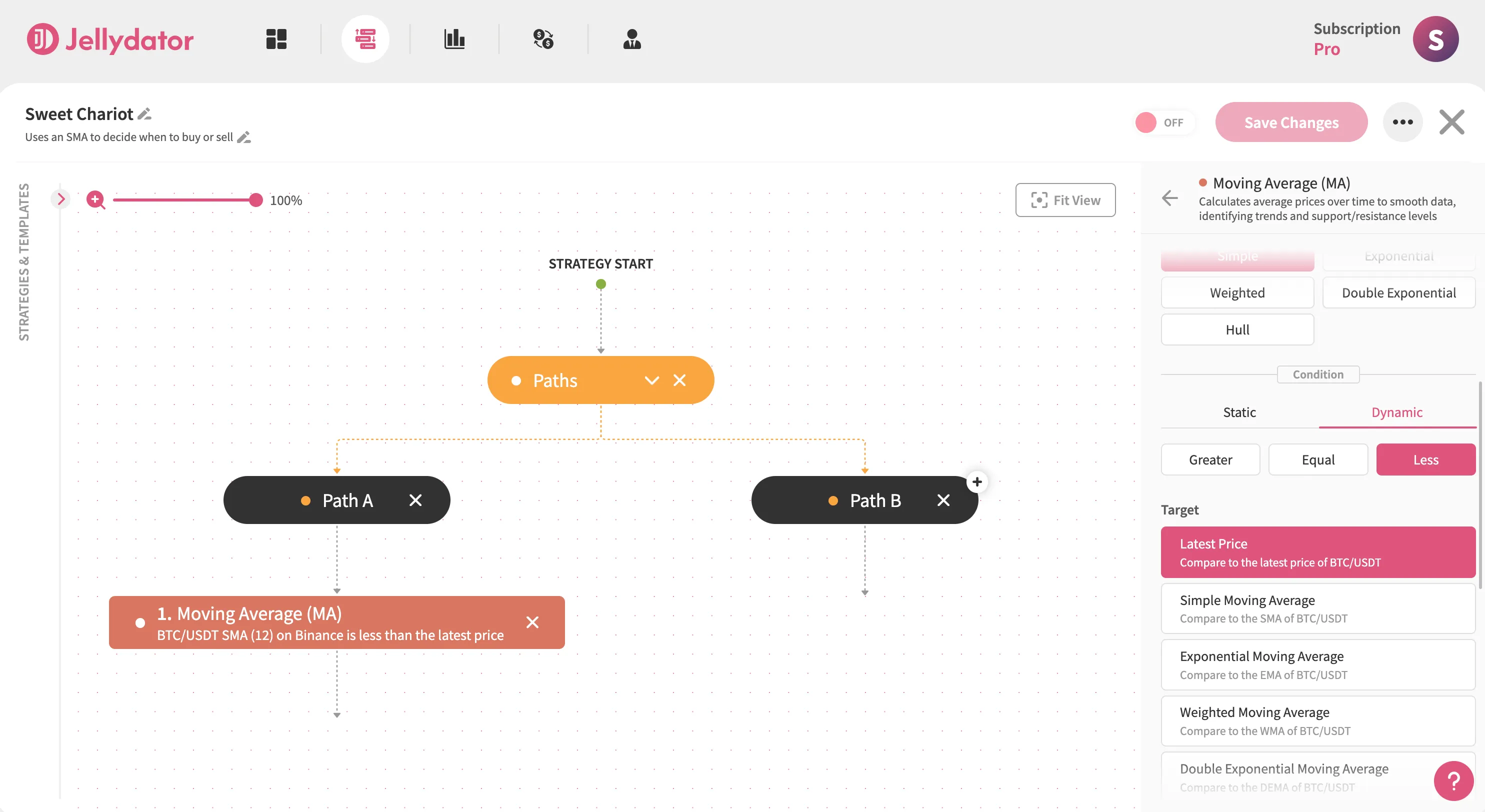
Next, scroll down and click on the “Advanced Options” button. Once the “Advanced Options” section appears, set the length to 40.
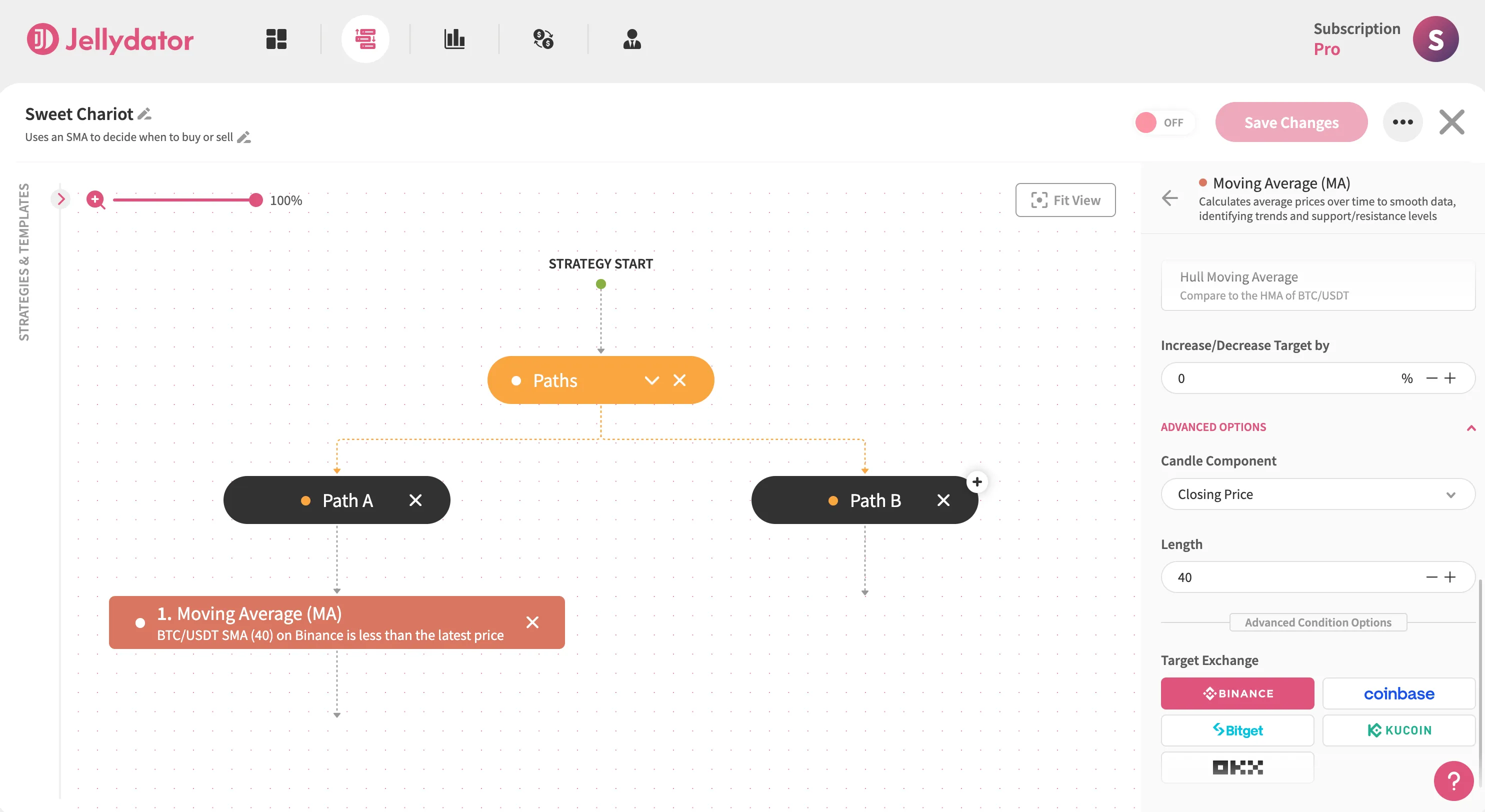
Directly beneath this step, add a Buy step configured for BTC/USDT. In its configuration panel, select the “Latest Price” option and allocate 100% of your USDT balance.
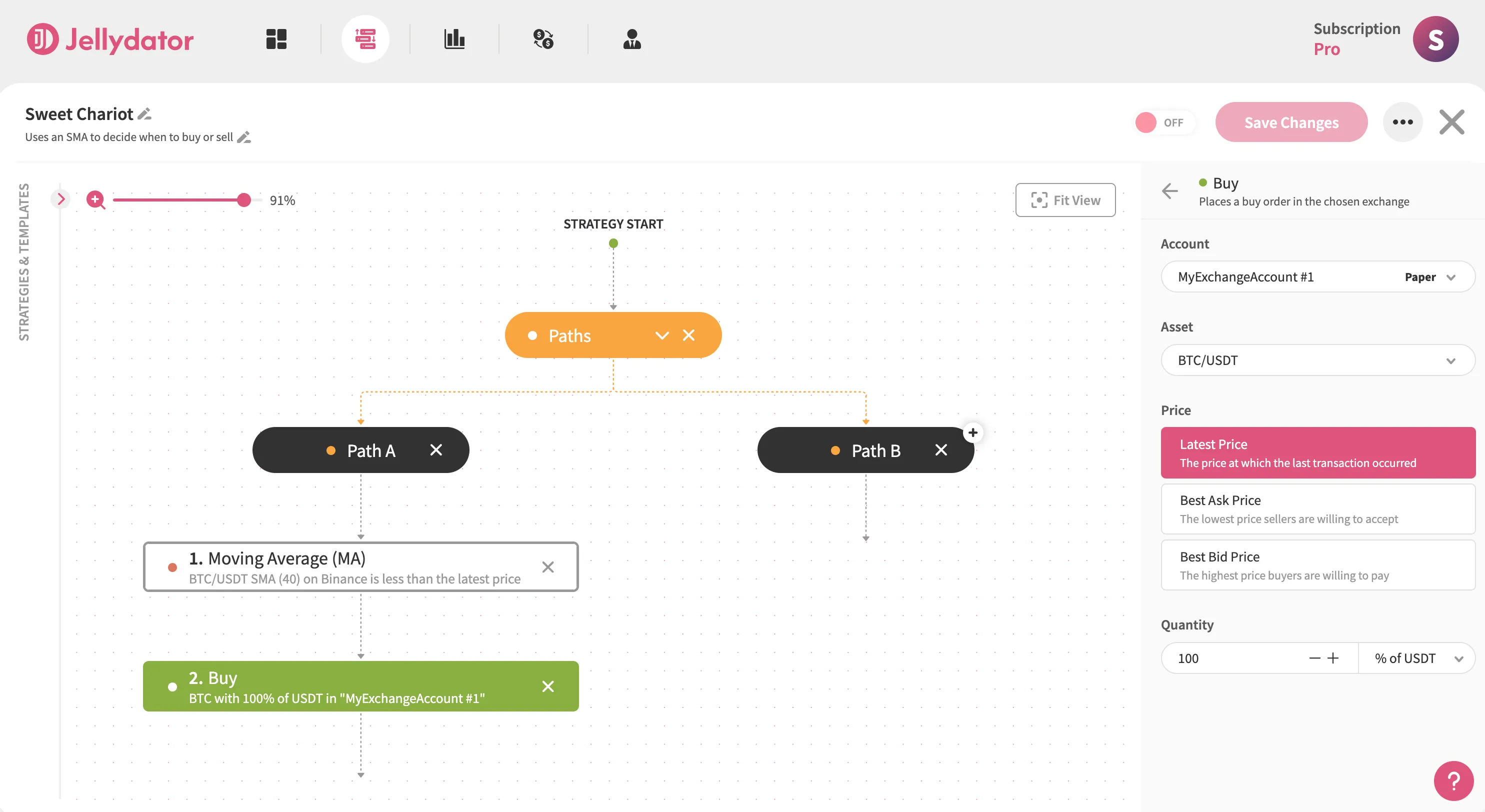
Path B Configuration
For Path B, add another Moving Average step and select it to open the
configuration panel. Use the same Simple Moving Average (SMA),
BTC/USDT pair and 1-day interval.
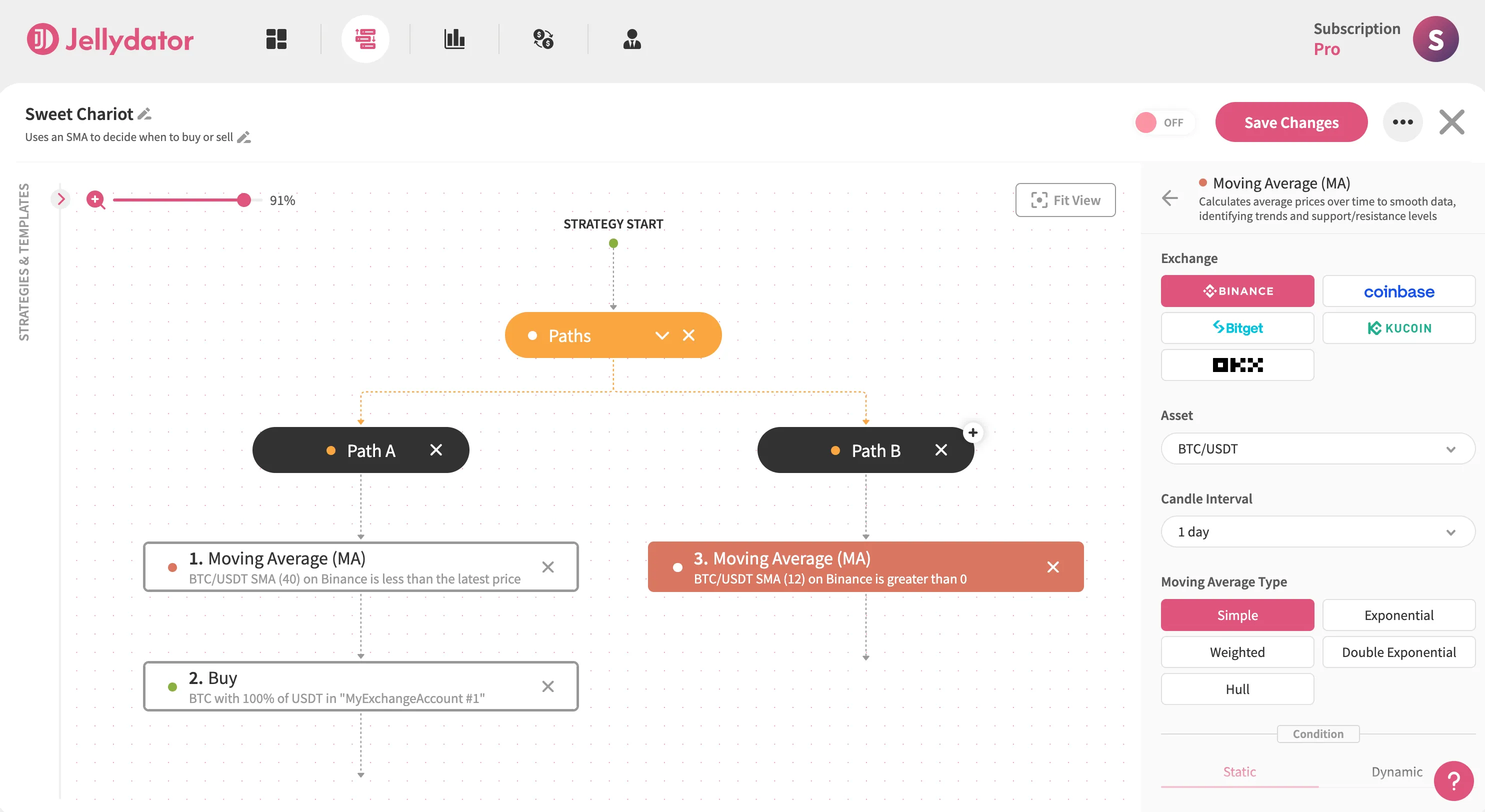
Scroll to the “Condition” section, choose the “Dynamic” option, then set “Latest Price” as the condition target. Select Greater as the operator to establish the “SMA > Latest Price” condition.
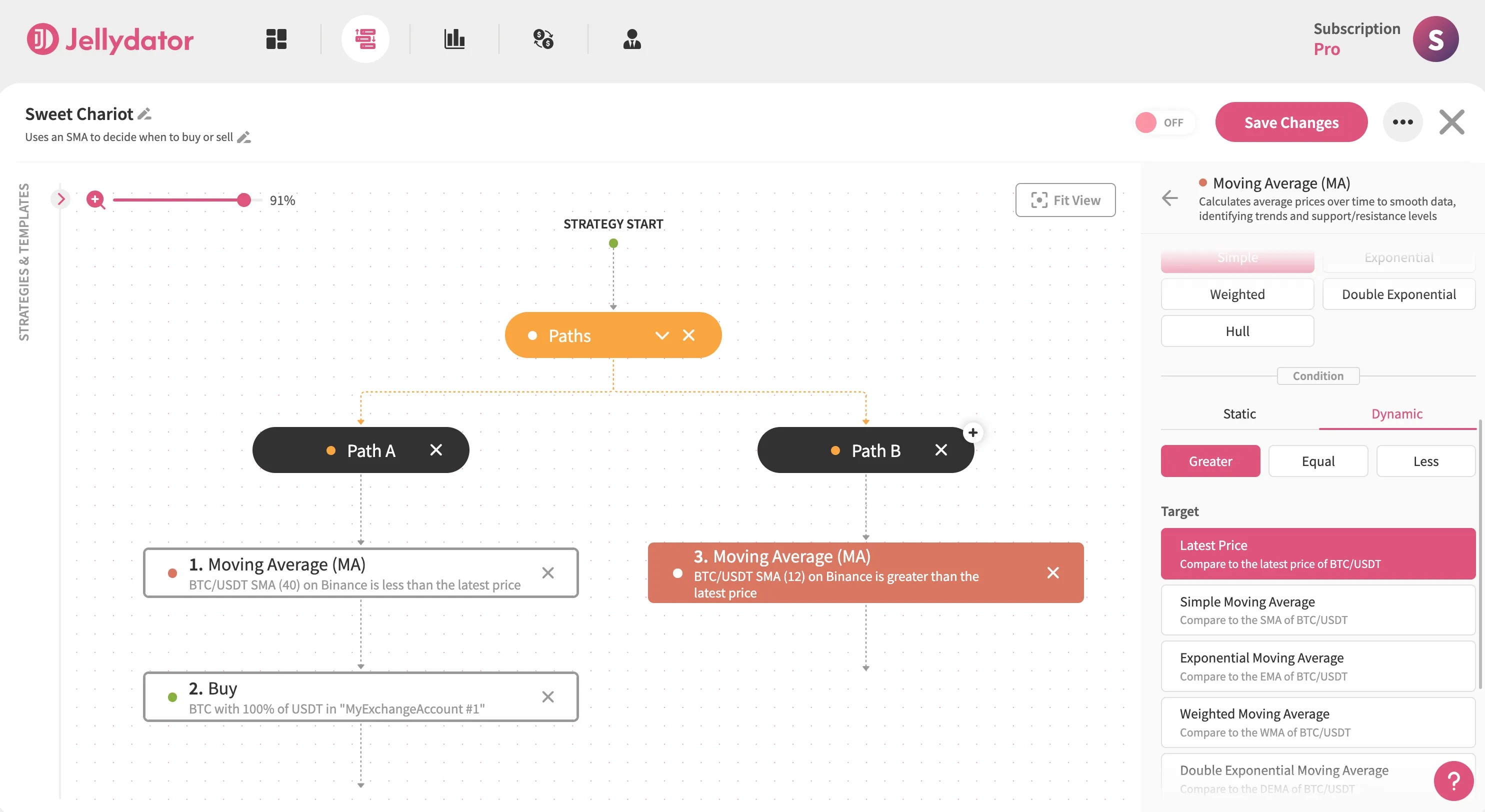
Then, scroll down and click on the “Advanced Options” button. Once the “Advanced Options” section appears, set the length to 40.

Below this step, place a Sell step. It should use the same asset pair and price option as the Buy step. Set the quantity value to 100% of your BTC.
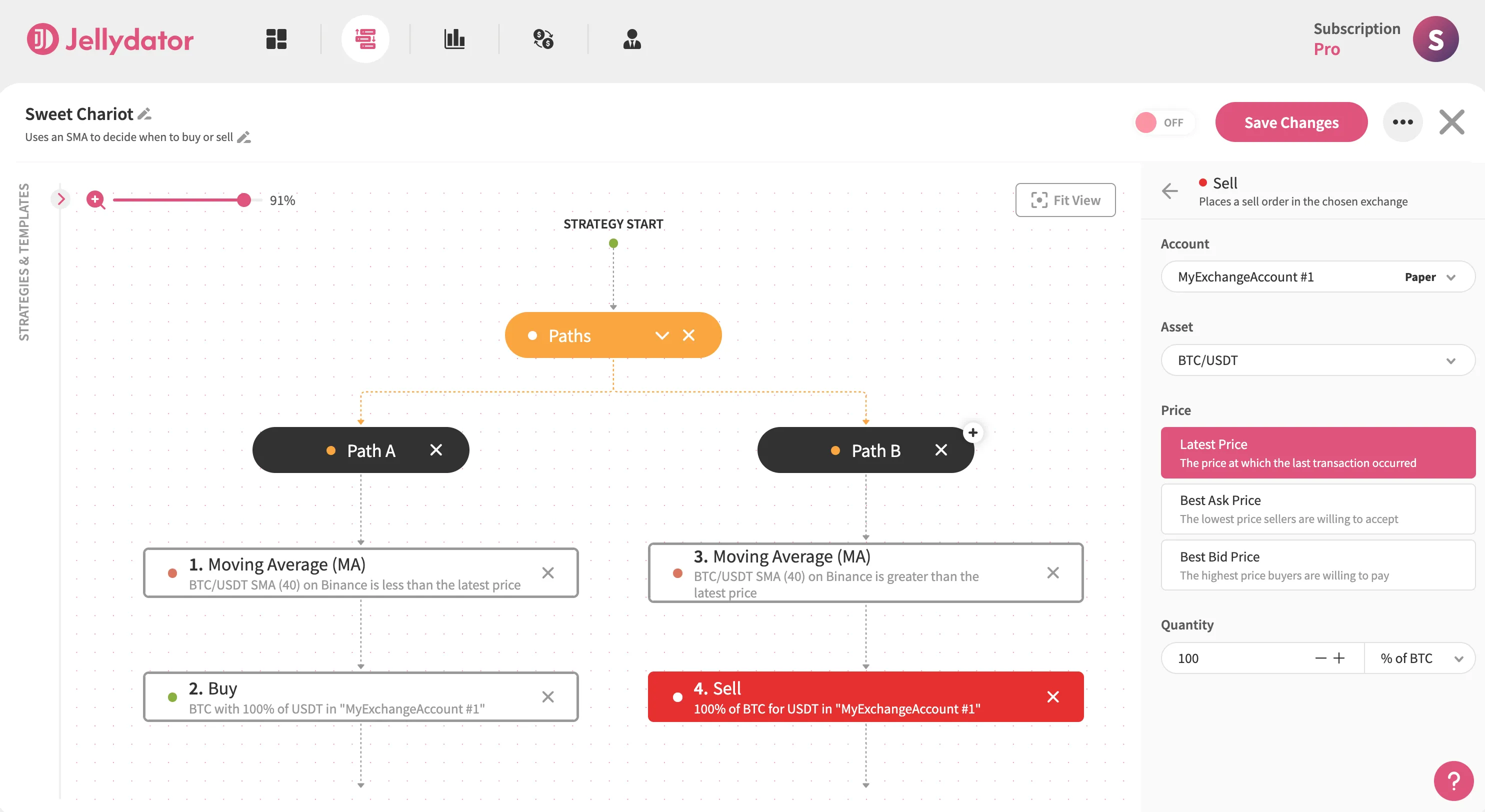
Additional Enhancements
Block Overlapping Orders
Add an Order Count step before your Paths to prevent duplicate trades. Configure it to check BTC/USDT orders with both buy and sell sides. Set status filters to “Open” and “Partially Filled.”
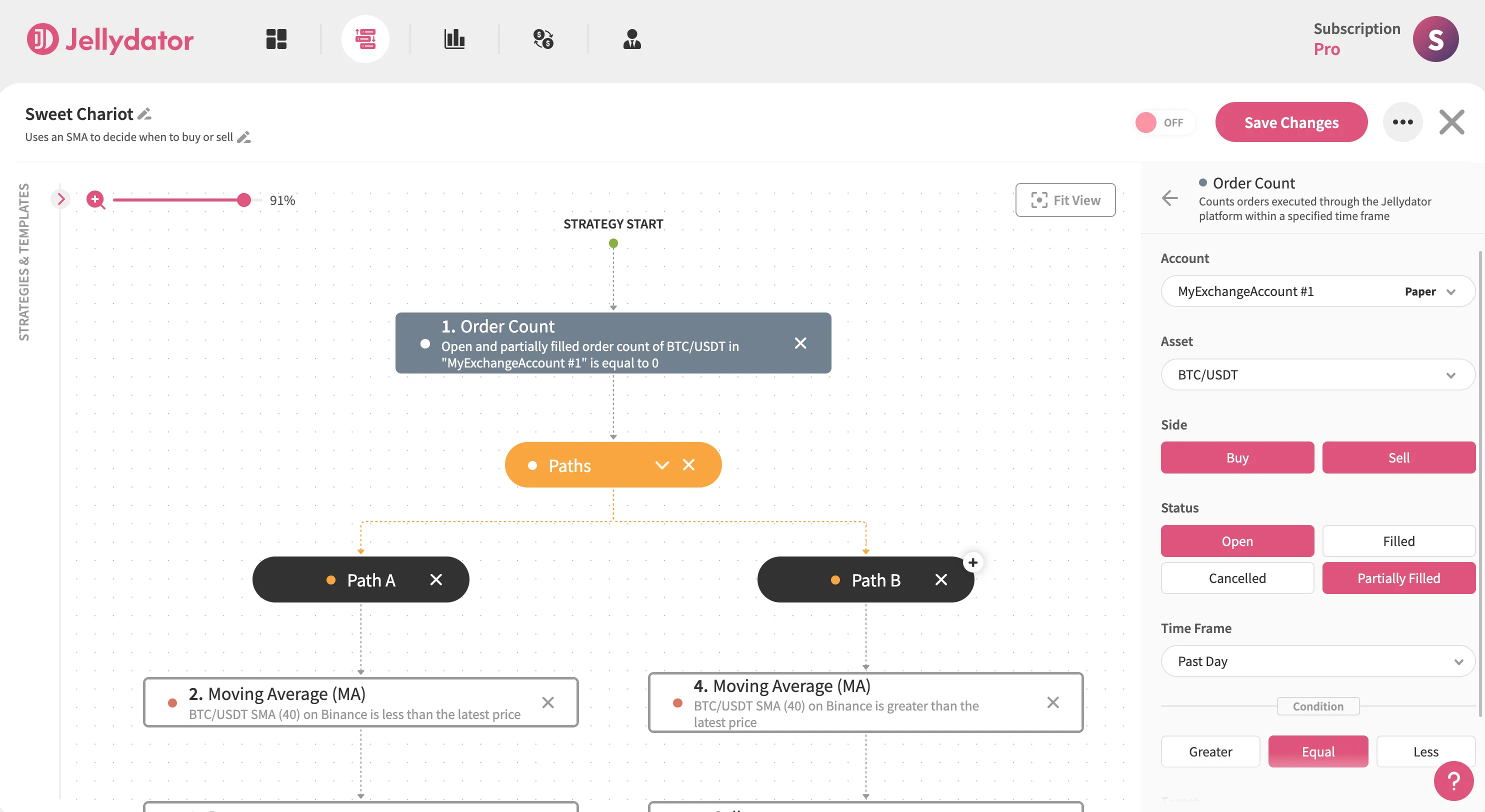
Then, create the condition “Equal to 0”. This crucial check ensures your strategy only acts when previous orders are fully completed, maintaining clean trade execution.
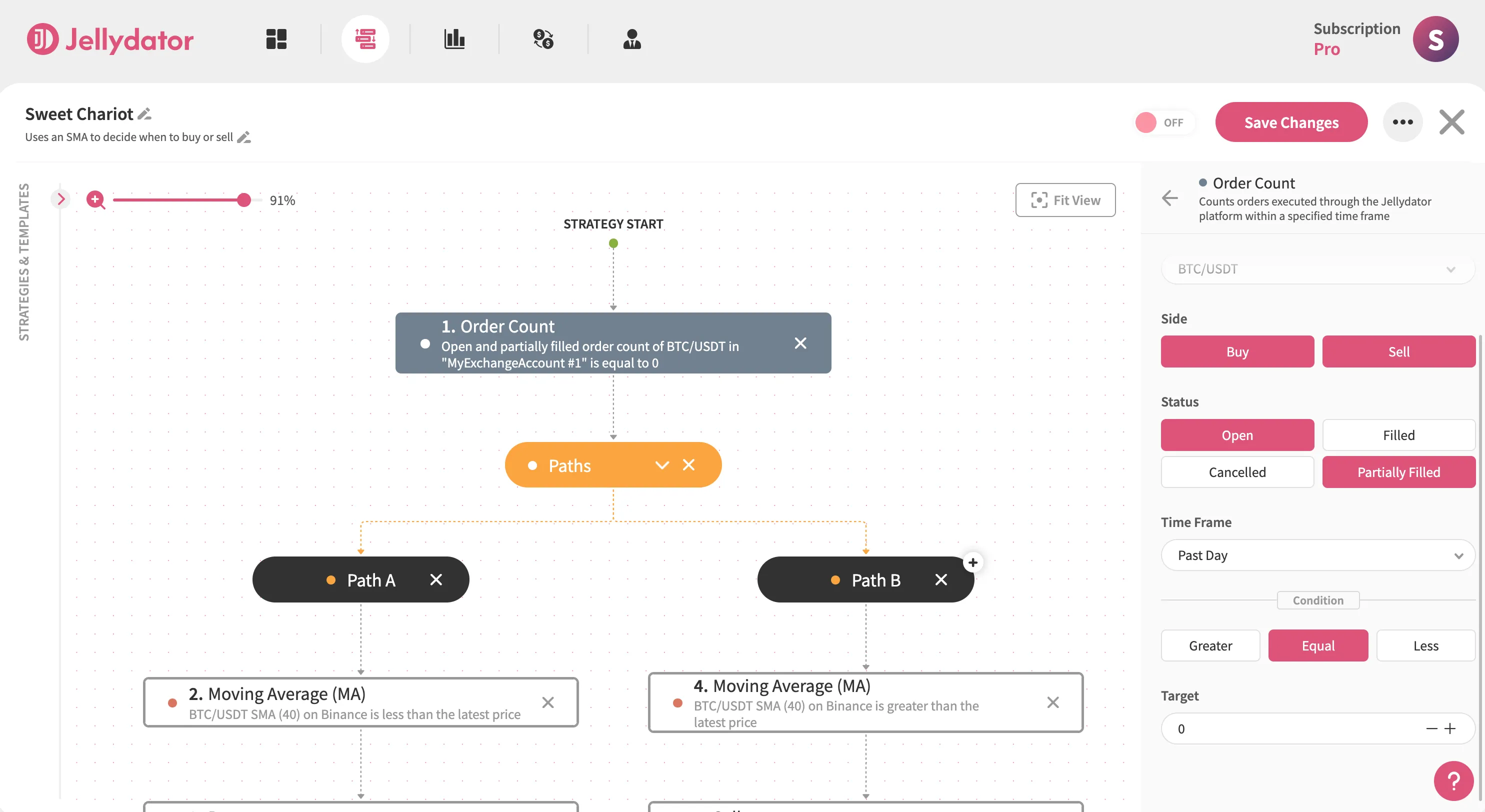
Add Balance Verification Steps
In Path A, add an Asset Balance step for BTC. Set the condition to “Less Than or Equal To” a small amount like 0.0001 BTC—this ignores residual “dust” while treating your balance as effectively empty for buying.
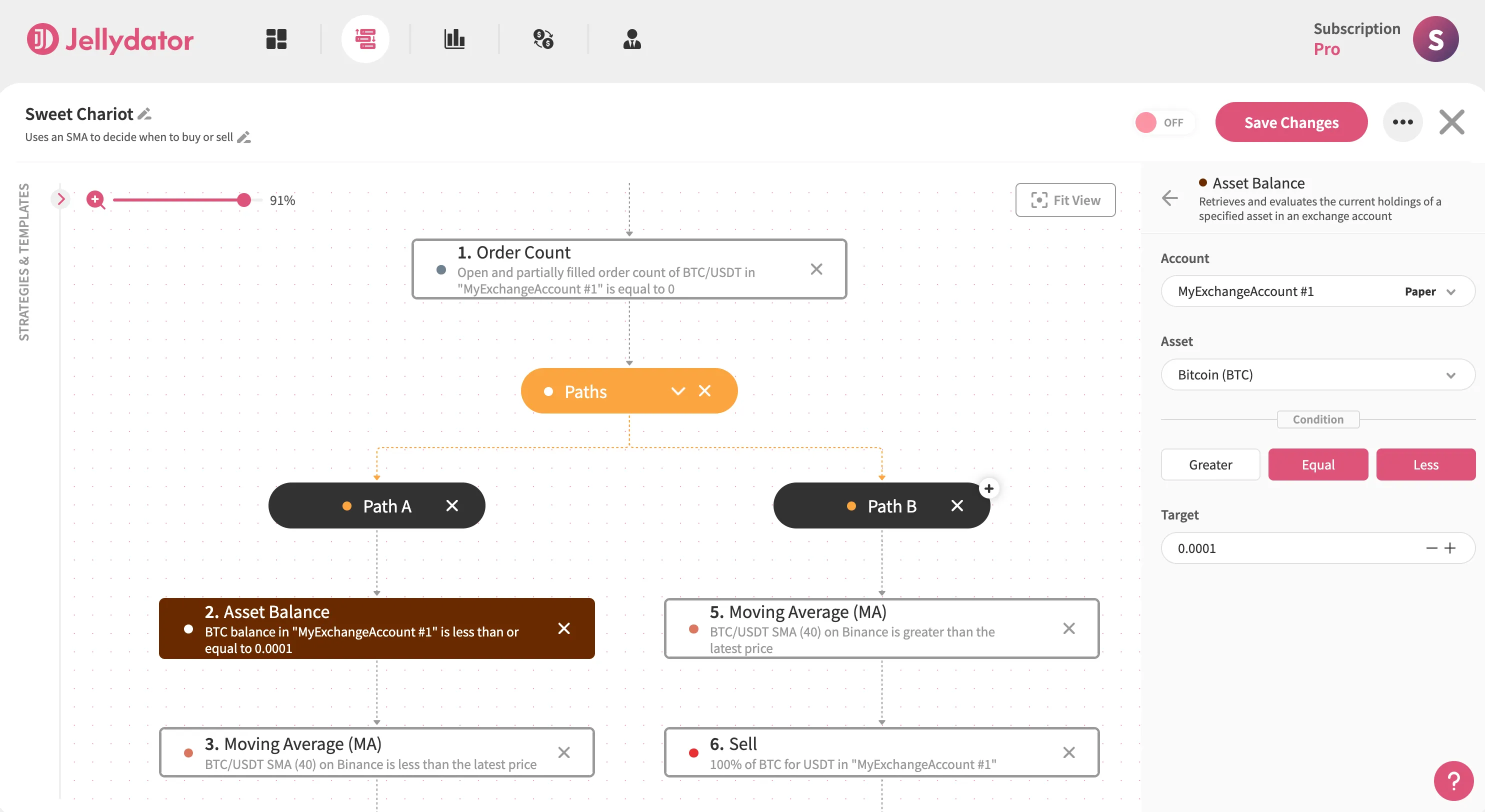
In Path B, add another Asset Balance step for BTC with “Greater Than” the same threshold. This ensures you only sell when holding a tradable quantity. Together, these steps maintain clean position management across both entry and exit points.

Stay Informed with Real-Time Alerts
Enhance your strategy by adding Telegram notifications to both paths. In Path A, include a Send Telegram Message step after your buy order. Customize it with a clear buy message like “Buy order placed.”

For Path B, place a similar message step after selling, using a phrase such as “Sell order placed.”
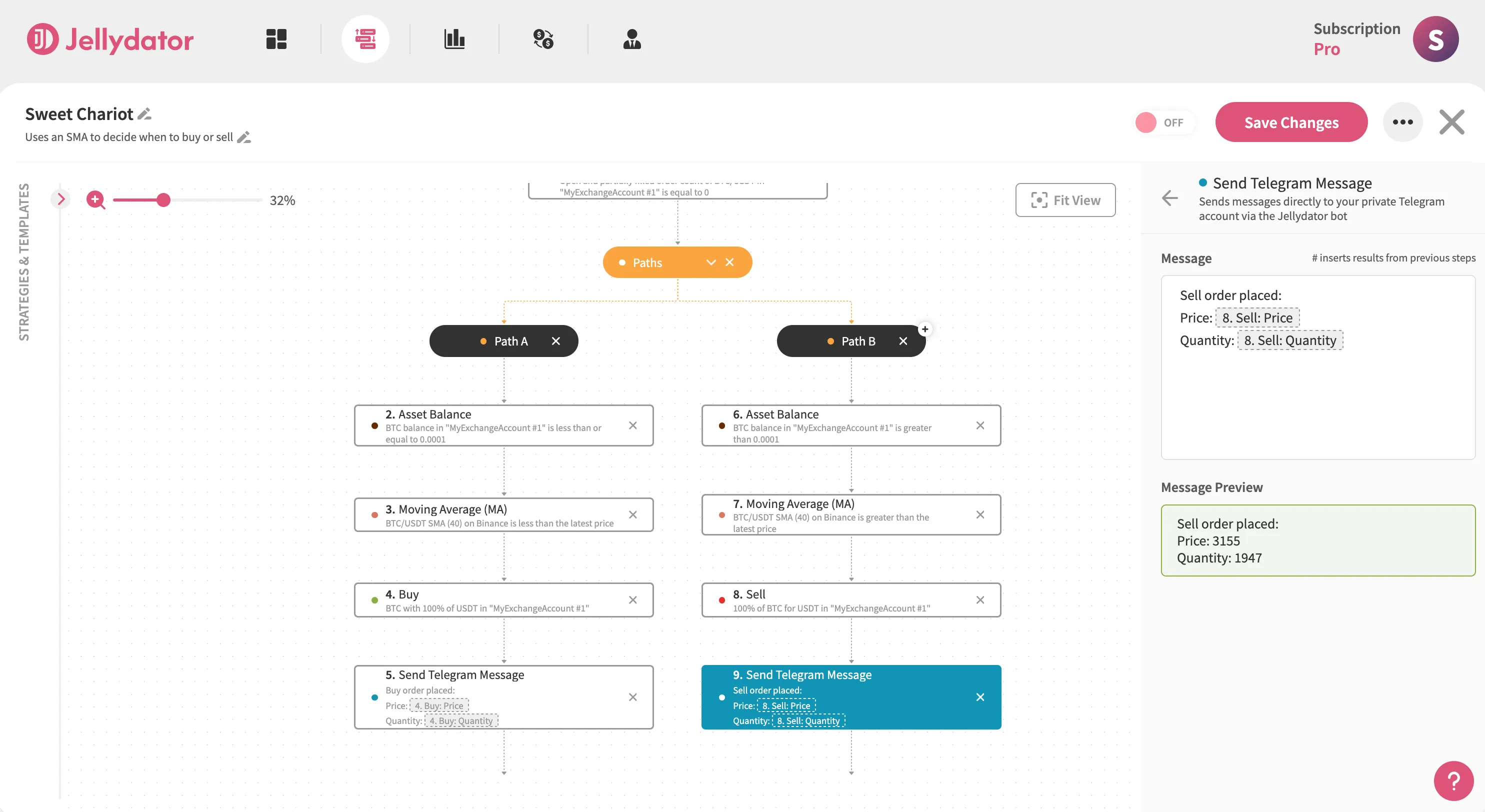
Conclusion
Sweet Chariot proves that a straightforward strategy can still work well, especially in markets that move in clear trends. Its simplicity makes it a great starting point, but you don’t have to stop there. By adding other indicators or tapping into Jellydator’s exclusive market sentiment tools, you can take this classic strategy to the next level and tailor it to fit your own trading style.

